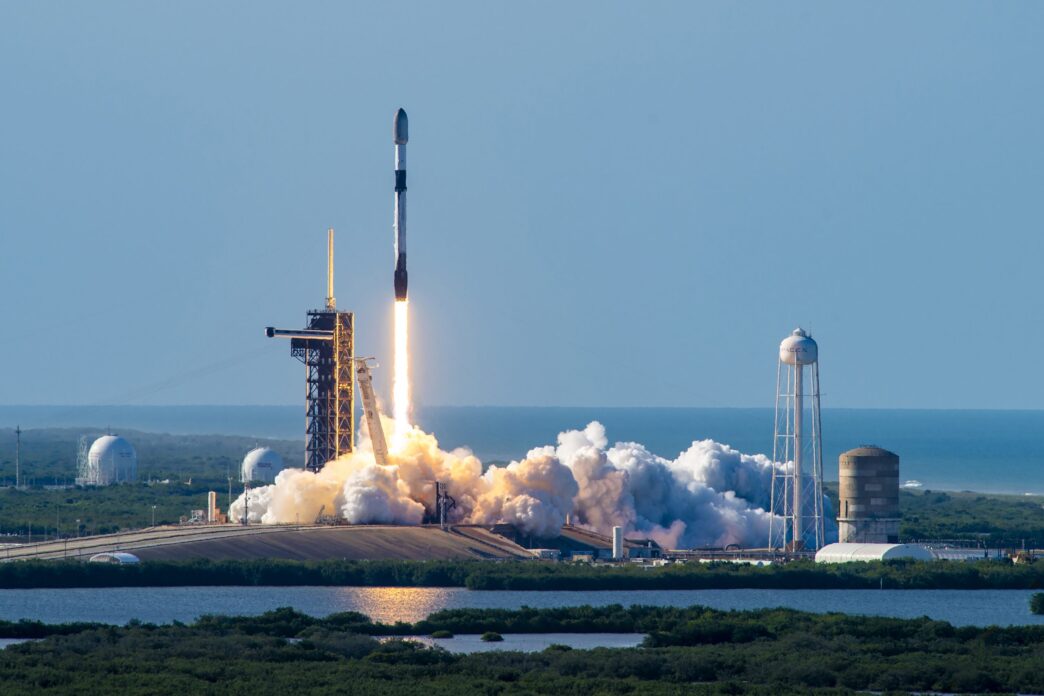Introduction:
SpaceX Starlink Satellites:
NASA astronaut Don Pettit recently captured striking images of SpaceX Starlink satellites from the International Space Station (ISS). Pettit observed the satellites as bright white flashes in space using time-lapse photography. These flashes are unique, visible only from orbit, and not directed at Earth.
Astronaut’s Observations:
Pettit described the Starlink satellites on his fourth space mission as “strikingly bright from orbit.” In his post on X (formerly Twitter) on November 15, he compared their appearance to a miniature version of the monolith from 2001: A Space Odyssey. He explained that the satellites’ large flat faces point toward Earth while the solar panels extend outward like the fin of a Dimetrodon, a prehistoric creature.

The Starlink Megaconstellation:
Over 6,600 active satellites orbit Earth at varying altitudes and inclinations. Each satellite has a lifespan of about five years. SpaceX plans to launch up to 42,000 satellites in the future, forming a massive constellation that aims to provide global internet coverage.
| Fact | Details |
|---|---|
| Astronaut Capturing Photos | NASA astronaut Don Pettit took timelapse photos of SpaceX Starlink satellites from the ISS. |
| Date of Observation | November 15, 2024. |
| Appearance of Starlink Satellites | Bright white flashes resembling a miniature monolith from 2001: A Space Odyssey. |
| Starlink Satellite Comparison | Similar to the monolith, with a large flat face pointing towards Earth and solar panels extending outward. |
| Number of Active Starlink Satellites | Over 6,600 active satellites in low Earth orbit. |
| SpaceX’s Future Starlink Plans | SpaceX plans to launch up to 42,000 Starlink satellites in the future. |
| Starlink Satellite Lifespan | Each satellite lasts about five years. |
| Astronomical Concerns | Astronomers are concerned about the brightness of the satellites affecting observations. |
| Efforts to Reduce Brightness | SpaceX has made adjustments to satellite orientation and coatings to dim their brightness. |
| Visibility Conditions for Starlink Satellites | Visible only under specific conditions, typically during pre-dawn or pre-dusk hours. |
| Reflection from Solar Panels | Starlink satellites reflect sunlight off their solar panels, creating flashes visible from space. |
| ISS Viewing Angle | Flashes are visible from 5 to 18 degrees ahead or behind the sun from the ISS. |
This table provides a quick reference for key facts mentioned in the article.
Concerns About Brightness:
While the Starlink satellites offer technological benefits, astronomers have raised concerns about their brightness. These satellites are highly reflective and can interfere with astronomical observations. In response, SpaceX has tried reducing the satellites’ brightness by adjusting their orientation and applying special coatings. However, concerns about their impact on astronomy and the night sky remain.
Pettit’s Timelapse Photos:
In his timelapse photography, Pettit captured the Starlink satellites as “wonky streaks” of light flashing across the ISS. He explained that these streaks occur when sunlight reflects off the satellites’ solar panels during the pre-dawn or pre-dusk hours. The flashes are only visible when the satellites are positioned between 5 and 18 degrees ahead or behind the sun.

read more: OPPO Previews Reno 13 Series: What to Expect Ahead of November 25 Launch
Conclusion
Pettit’s recent photos offer a rare and fascinating view of the Starlink satellites from space. While the satellites are impressive in their brightness, their presence also raises important questions about their long-term impact on space observation. As SpaceX expands its constellation, these concerns may shape future satellite technologies’ development and deployment.








